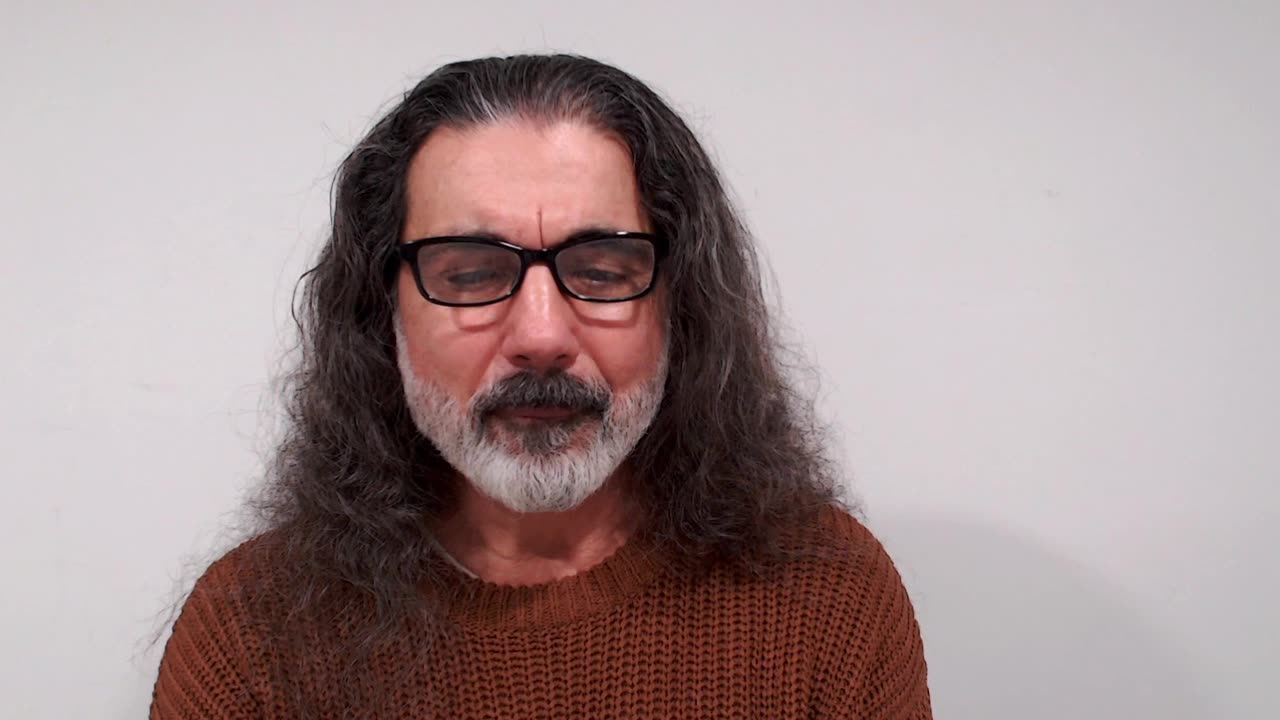Premium Only Content

Shooting From The Hip - 30 - The Moon
Moon - Earth's only natural satellite - goes around Earth distance of about 239,000 miles (385,000 kilometers) - Earth & Moon tidally locked - Their rotations are so in sync we only see one side of the Moon.
mass 1.2% of Earth's - diameter roughly 1/4 of Earth's (3,474 km -2,159 mi): Orbit - tidal locked, Moon has a 1:1 spin - orbit resonance - rotation-orbit ratio makes the Moon's orbital periods around Earth equal to its corresponding rotation periods - reason for only one side of the Moon, its so-called near side, being visible
Rotation - tidally locked synchronous rotation of the Moon as it orbits the Earth results in it always keeping nearly the same face turned towards the planet. The side of the Moon that faces Earth is called the near side & the opposite the far side - often inaccurately called the "dark side", but it is in fact illuminated: once every 29.5 Earth days
makes Earth a more livable - stabilizes Earth's Climate - minimizes wobble on its axis - causes tides - consistent seasons - no extreme weather - Life thrives because of the Moon
no agreement on how moon was formed
However: samples of moon rocks since 1969 - Moon rocks, soil sample - soil & rocks on the Moon surface are older than the soil & rocks underneath them, this is seen all over the Moon - unusual because typically it is the reverse
Moon Anomalies - 1)typically denser materials are found on the way to the core of a planetary object, lighter material towards the surface: on the moon denser material at surface- no explanation 2) surface of Moon covered asteroid impacts - impact fields are covered in rock, these rocks should be a variety of different ages: except they share a uniformity of age - crater depths seem uniform, no matter the width of crater- counter intuitive 3) lunar dust, is different chemically, than lunar soil & rock 4) moon has no magnetic field - yet Moon rocks are magnetized 5) moons rocks have been dated back to the formation of Solar System- Earth estimated 4.54 billion years old, plus or minus about 50 million years - Scientists have searching for the oldest rocks to radiometrically dated - northwestern Canada, they discovered rocks about 4.03 billion years old 6) radioactive elements isotopes: uranium-236, neptunium-237 don't occur naturally, yet present - not natural to Earth: they are made 7) rare metals - titanium, chromium, zirconium (some strongest metals known, corrosion resistant) - in abundance on Moon 8) Earth's Moon largest moon in Solar system, unusual - not seen in other solar systems 9) Orbits almost too close to Earth - almost perfect circular orbit, unusual - orbit allows of near perfect Solar Eclipse 10) Earth's distance from sun 400 times our distance to the Moon - Sun 400 times the size of the Moon
Speculation - Earth & Moon seems as though they were not formed together 1970: 2 Scientists USSR: conclusion based on all evidence, coincidences - not only hollow, A spaceship - both agreed this sound crazy - reasonable explanation - if true
Who Built The Moon? - earliest ancient traditions; talked about a sky without a Moon: Roman & Greek account from 5th BCE spoke about the Proselynes of Arcadia; claimed to have been here before A moon in the heavens - ancient culture Bolivia, Tiwanaka of a time without a moon - 11500 to 13500 years ago: Younger Dryas - Zulu, Africa: legends tell Moon is hollow & inhabited by intelligent Alien Reptilians- story states 2 Gods; brothers put moon into orbit - claimed before the moon the climate was different: no seasons, permanent cloud of water vapor covered the Earth - after the arrival of moon all water vapor condensed, fell to the Earth- a massive flood was the result- climate stabilized
Transient Lunar Phenomenon (TLP) or Lunar Transient Phenomenon (LTP) is a short-lived change in light, color or appearance on the surface of the Moon - short-lived lunar phenomena go back 1,000 years - some observed independently by multiple witnesses or reputable scientists - the majority phenomenon reports are irreproducible & no adequate control experiments explain their origins & why - most lunar scientists acknowledge transient events as outgassing & impact cratering do occur -the controversy is in the frequency of events
Apollo 10 - Audio Recordings Document 'Weird Music' Heard By Apollo Astronauts On Far Side Of Moon - alone on the far side of the Moon, the astronauts reported hearing a "whistling sound" which one said "sounds like - outer space music
Apollo 11 (July 16–24, 1969) American spaceflight that 1st landed humans on the Moon. Commander Neil Armstrong & Lunar Module Pilot Buzz Aldrin landed the Apollo Lunar Module Eagle on July 20, 1969 - Armstrong became first person to step onto the Moon's surface -6 hours & 39 minutes later, on July 21 - they spent about 2 hours & 15 minutes exploring site they named Tranquility Base upon landing - they collected 47.5 pounds (21.5 kg) lunar material to return to Earth
-
 LIVE
LIVE
MattMorseTV
1 hour ago🔴The UK just hit ROCK BOTTOM.🔴
876 watching -
 1:20:26
1:20:26
Kim Iversen
3 hours agoThis Intel Analyst Has Accurately Predicted Putin's Every Move... Is War With NATO Next?
98.7K26 -
 LIVE
LIVE
SpartakusLIVE
1 hour ago#1 HERO of the PEOPLE || Ending the Week with FUN, WINS, and LAUGHS
118 watching -
 LIVE
LIVE
The Jimmy Dore Show
4 hours agoIn Undercover Video DOJ Investigator ADMITS Epstein Was CIA! UK Pushing COMPULSORY Digital ID!
8,534 watching -
 LIVE
LIVE
GritsGG
10 hours agoQuad Win Streaks!🫡 Most Wins in WORLD! 3600+
104 watching -
 2:34:12
2:34:12
Spartan
3 hours agoScrims vs Mindfreak and then Ranked or another game idk
4.72K1 -
 1:35:57
1:35:57
Roseanne Barr
5 hours agoEnd-Time Prophecies REVEALED: Jonathan Cahn’s Warning
142K50 -
 1:08:58
1:08:58
vivafrei
6 hours agoComey INDICTED! Proof Jan. 6 was a FED-SURRECTION! Ostrich Crisis Getting More Attention & MORE!
153K100 -
 LIVE
LIVE
StevieTLIVE
1 hour agoBirthday Bash HYPE Warzone Wins ALL NIGHT
13 watching -
 6:30:53
6:30:53
Dr Disrespect
8 hours ago🔴LIVE - DR DISRESPECT - ARENA BREAKOUT: INFINITE - STORM EVENT
181K9